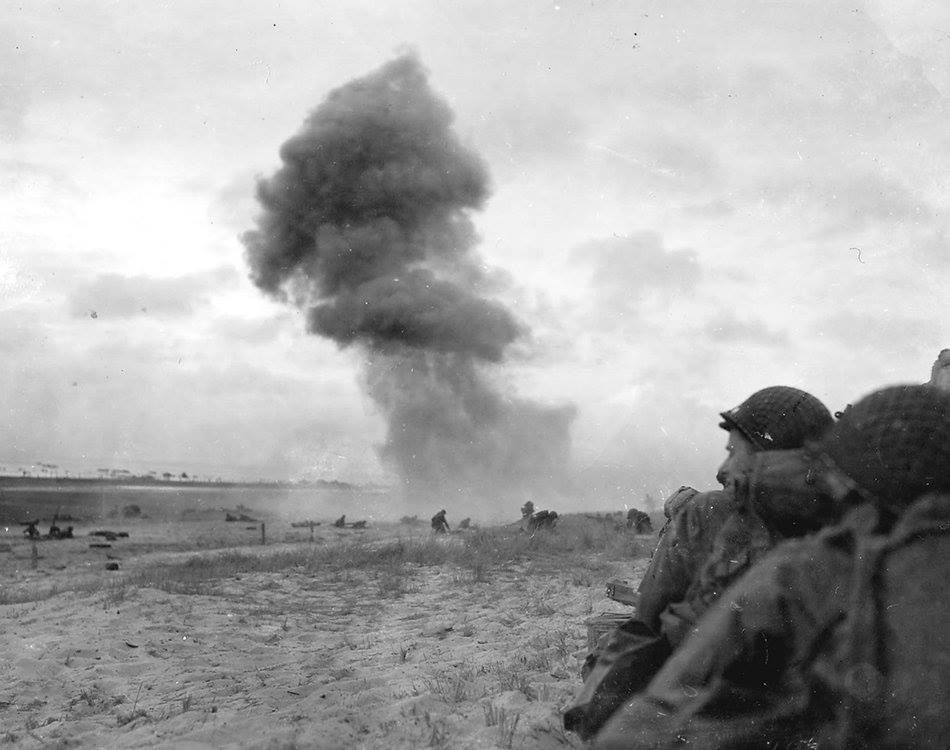A and B turrets, HMS Hood 1940
HMS Hood’s forward 15" turrets, with a 4" gun’s crew under training in the foreground.
HMS Hood was the pride of the Royal Navy, she was a massively armed battlecruiser with what was thought to be armour equal to her armaments. To all intents, HMS Hood was considered to be one of the most powerful battlecruisers afloat in World War Two.
HMS Hood was 44,600 tons, had a crew of 1,419 and was faster than the Bismarck with a maximum speed of 32 knots. The Hood had been launched in 1918 and was armed with 8 x 15 inch guns, 12 x 5.5 inch guns, 8 x 4 inch AA guns, 24 x 2 pound guns and 4 x 21 inch torpedoes.
However, the Hood suffered from one major flaw – she did not have the same amount of armour as the Bismarck. The fact that the Hood was faster than the Bismarck by 3 knots was as a result of her lack of sufficient armour for a naval battle fought in World War Two. What had been considered sufficient armour in 1918 when Hood was built, was to prove a fatal flaw in 1941.
On May 24th, 1941, the Royal Navy tailed the Bismarck and Prinz Eugen when they attempted to break out into the Atlantic. If both of these ships had got into the Atlantic, they could have created havoc amongst the Atlantic convoys that were vital to Britain. The Hood relied on information sent back to it by the cruisers Norfolk and Suffolk. The Bismarck and Prinz Eugen had night time and sea fog on their side and for a while both cruisers lost both German ships.
However, by 02.47 on May 24th, the Suffolk had regained contact with the Bismarck. The information sent back by the Suffolk led the Hood to believe that she would be just 20 miles from the Bismarck at 05.30 on May 24th. At 05.35, the lookout from the Hood made out the Prinz Eugen and the Bismarck at a distance of 17 miles.
Admiral Holland, on the Hood ordered the battlecruiser to turn to the German ships and at 05.45 they were only 22,000 metres apart. At 05.52, the ‘Hood’ opened fire and shortly afterwards was joined by the ‘Prince of Wales’. At 05.54, both the Prinz Eugen and the Bismarck fired their guns primarily against the ‘Hood’.
The Prinz Eugen hit the Hood and set alight some anti-aircraft shells kept on deck. The fire this caused was not particularly dangerous for the ‘Hood’ even though it produced a great deal of smoke. At 06.00 a salvo from the Bismarck hit the Hood. The Bismarck had fired from 17,000 metres and the elevation of her guns meant that the shells that hit the ‘Hood’ had a high trajectory and a steep angle of descent. The Hood had minimal horizontal armour and one of the shells from the Bismarck penetrated the Hood’s deck and exploded in one of her magazines. A massive explosion tore the ‘Hood’ in half. Those who saw the explosion said that the bows of the ‘Hood’ were raised out of the sea before they sank. The ship sank extremely quickly – within two minutes – and 1,416 men out of a total crew of 1,419 died. (historylearningsite)













